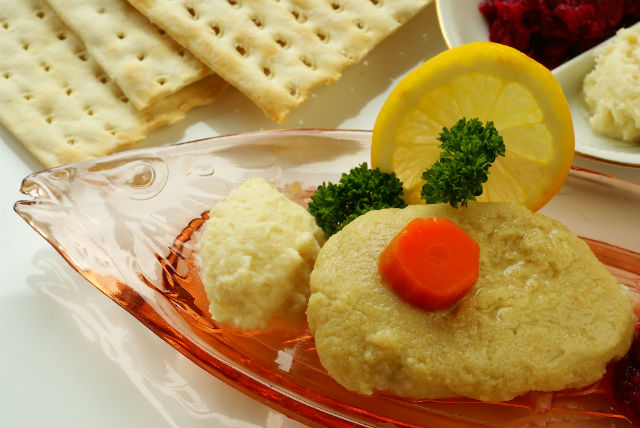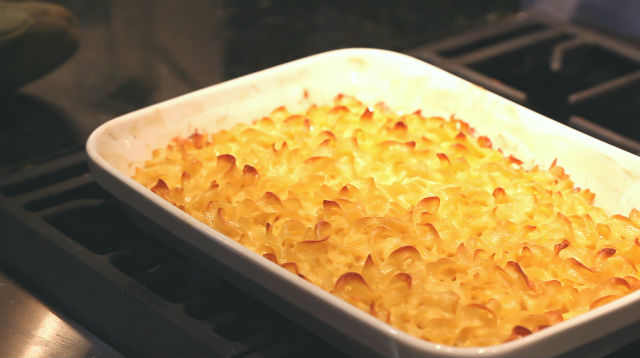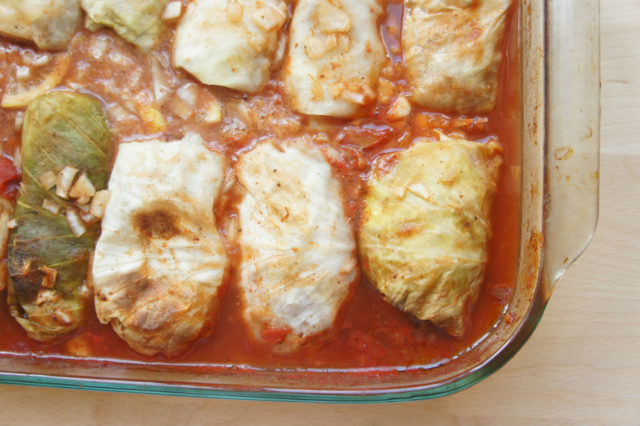Polish and Russian-Jewish Cuisine
From the 13th century, Jews in flight from France, Italy and Germany were moving into Poland, which already had some Jewish communities, mainly from Byzantium. By the 16th and 17th centuries they moved in great masses at the invitation of the king of Poland. At first they lived under the king’s protection in the royal cities of Cracow, Poznan, and Lemberg.
But by the end of the 17th century, faced with the hostility of the townspeople and of the Church, they moved to the provinces of Galicia, Lithuania and Ukraine, where the Polish nobility (Jews called them Poretz) invited them to manage their agricultural lands and to settle in the shtetl — the new towns built on their demesnes. The nobles leased the Jews flour mills, dairy‑processing plants and taverns, and gave them exclusive rights to brew vodka and schnapps. They allowed them to farm fish in ponds, especially pike and carp, which became associated with Jewish foods. But the masses remained very poor, on the verge of starvation, limited by restrictions and prohibitions, and in constant fear of attacks by the peasantry and Cossacks.

When Poland was partitioned three times at the end of the 18th century and its territories were annexed by Russia, Prussia and Austria, the Jews in these territories became subjects of three different crowns. It was in this way, and also with the heavy migrations of Jews from Poland into neighboring countries, that the foods of the shtetl — including those that originated in Germany, such as challah bread, gefilte fish, chopped liver, and lukshen pudding (noodle kugel) —were transported all over Eastern Europe, together with the social structures (large families, men devoted to religious studies, women earning the family living) and the culture based on the Yiddish vernacular and German rabbinic traditions.
In 1772, when the Polish territories of Ukraine, Lithuania, Courland (now in Latvia), and Belorussia were annexed by Russia, the great Jewish masses living in those territories became Russian subjects under the rule of the czars (before that, Jews had not been allowed to live in Russia). In this way Russian Jewry was a continuation of Polish Jewry It came to represent the largest Jewish community in the world, and was the stronghold of the Ashkenazi culture.
 In the beginning in Russia, as in Poland, the Jews had represented a kind of middle class between landowning aristocracy and peasantry. Many earned their living from leasing flour mills, inns, and taverns, and managing estates and forests. They were also craftsmen, shopkeepers, and hawkers, and their shoestring enterprises included making and selling soda water (seltzer) and shoe wax, syrup, pretzels, goose fat and pickles. But their position deteriorated. They were confined, by Catherine the Great, to restricted areas in the Pale of Settlement (former Polish territories) and lived in a state of disenfranchisement and poverty under the constant threat of pogroms. Permission to live outside the confines of the Pale was granted only to certain groups, such as professionals and wealthy businessmen.
In the beginning in Russia, as in Poland, the Jews had represented a kind of middle class between landowning aristocracy and peasantry. Many earned their living from leasing flour mills, inns, and taverns, and managing estates and forests. They were also craftsmen, shopkeepers, and hawkers, and their shoestring enterprises included making and selling soda water (seltzer) and shoe wax, syrup, pretzels, goose fat and pickles. But their position deteriorated. They were confined, by Catherine the Great, to restricted areas in the Pale of Settlement (former Polish territories) and lived in a state of disenfranchisement and poverty under the constant threat of pogroms. Permission to live outside the confines of the Pale was granted only to certain groups, such as professionals and wealthy businessmen.
By the middle of the 19th century, Jewish society in Eastern Europe and Russia was transformed. With the growth of capitalism and the modernization of society, a Jewish proletariat and bourgeoisie had emerged in the cities. There were Jews of great wealth in St. Petersburg, Moscow, Kiev and Odessa, and in Cracow and Warsaw. Some went into the sugar and flour industries, into soda‑water and beer brewing, and into the salted‑and‑pickled‑herring trade, importing their fish from Scotland, England, Norway and Holland. Jewish dairies produced sour milk and curd cheese. Almost the entire grain trade of the northwestern provinces was in Jewish hands.
The cooking traditions adopted in the different provinces of Poland and Russia were not all that different from each other, because most of the regions shared the same ingredients and predilections, notably a taste for carp and salt herring, sausages and sauerkraut. They all had heavy dark and rye bread, they all made cucumber pickles, chicken soup, thick bean and lentil soups, pancakes and dumplings, and also sweet noodle puddings. They all used sour cream, dill, caraway, and poppy seed.
The severe winter climate had enforced a reliance on grains such as barley, millet and buckwheat, and on root vegetables and cabbage. The abundance of fruits — there were apples, pears, plums, cherries, gooseberries, currants, and raspberries — meant that they were used in everything from soups and sauces to pancakes, compotes, cakes, and pastries, and also as accompaniments to meat and poultry. Potatoes from the New World, which were rejected at first by the famished peasantry, became the best loved staple in the late 18th century. In the 19th century, many impoverished communities survived on bread, onions and potatoes. But each region did have its specialties and its special touches.

In Poland, Jews acquired a taste for sweetish foods. They used sugar with pickled herring and with vegetables such as carrots, turnips, and cabbage. It was there that they developed some of their most famous dishes, including fish with raisin sauce and the sweet version of gefilte fish with chrain — a red sauce made with grated horseradish and beet juice that counterbalances the sweetness of the fish. The Polish heritage includes cabbage leaves stuffed with rice; bagels, the famous ring breads that are first boiled, then baked; and the bialy, a bread roll covered with onion, which is named after the city of Bialystok; slivovitz (plum brandy) and the habit of drinking wine with brandy and honey.
Lithuanian Jews, like their coreligionists in northern Poland, put very little sugar in their food and used a lot of pepper. Sour foods, such as iced beet soup, sorrel soup with lemon and sour cream, and fermented pickled cabbage, were most common in Lithuania, as was meat cooked with prunes. The areas near the Baltic Sea were famous for curing and pickling fish in the Scandinavian style. Ukraine and Russia generally were strong on beet soups, on grain—especially kasha (buckwheat)—on curd cheese and sour cream. Blini (buckwheat pancakes) and knishes (potato‑and‑buckwheat pies), pirogi, piroshki, and baranki (sour‑cream‑dough cakes with poppy seed) were staples. The grander days of the Jewish elites in Eastern European communities brought the zakuski—spreads of small cold and hot dishes with which Russians and Poles began formal meals.
No comments:
Post a Comment